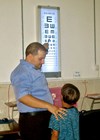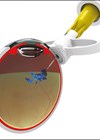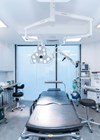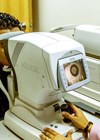Ophthalmology
Part 1: The Arclight Project – Frugal tech for sight
Click here for Part 2 on this topic, and here for Part 3 The Arclight Project is a mix of frugal design, manufacturing, distribution, teaching, research, and advocacy, all wrapped up in a social enterprise based at the University of...
Virtual ophthalmic conferences: learnings from the Covid-19 pandemic
The Covid-19 pandemic was the catalyst for a number of paradigm shifts in numerous industries. The demand for proxies that follow social distancing measures created a hotbed for digital solutions and transitioned these to social convention. In the aftermath, the...
The All Eyes Foundation
At its core, All Eyes Foundation (AEF) wishes to help bring vision back to Iraq, and it intends to do this through ophthalmic subspecialty training, mentoring and infrastructure development. Based in Najaf, just over 100 miles south of Baghdad, the...
Strabismus and ocular motility, demystified
I am a former orthoptist, now trained in medicine and working as a foundation doctor. In my previous work, I was frequently approached by ophthalmology trainees eager for guidance with strabismus and ocular motility. Drawing on my clinical experience, I...
Minimally Invasive Glaucoma Surgery: What options are there and when might they be considered?
In recent years there has been a rapid expansion in a group of operations termed ‘minimally invasive’ or ‘micro invasive’ glaucoma surgery (MIGS). These options generally offer less significant IOP reduction, but with a more favourable safety profile when compared...
My top five: Innovative approaches to dry AMD
Age-related macular degeneration (AMD) is one of the leading causes of irreversible blindness in the developing world with its prevalence rising alongside age. In societies characterised by ageing populations, it is imperative we explore more effective treatment to alleviate the...
Evolving towards an interventional glaucoma mindset
Traditionally, a newly diagnosed glaucoma patient would be treated first with medical therapy. As the disease progressed or the initial intervention failed to adequately control intraocular pressure (IOP), clinicians would add more drops, selective laser trabeculoplasty (SLT), repeated SLT and...
100 years since Sir William Duke-Elder graduated from the University of St Andrews
With sincere thanks to Andrew King, Ophthalmic Optician and owner of Andrew King Opticians near Glasgow, for his extensive research into Duke-Elder’s life.' Sir William Stewart Duke-Elder. Photo credit: Edward Irvine Halliday, Institute of Ophthalmology. In the world of ophthalmology,...
Running a high-volume nurse led intravitreal service using the Sp.eye device – the Stanley Eye Unit experience
Introduction The vast majority of ophthalmology units utilise allied healthcare professionals (AHPs) to deliver intravitreal injections (IVIs). The Royal College of Ophthalmologists issued a statement 10 years ago advocating the use of non-medical practitioners performing IVIs [1]. The main benefit...
Investigating the link between corneal clarity and statin use
Transparency is a vital attribute of the cornea, necessary in preserving healthy vision. Maintaining this requires the collective input of the various layers of the cornea. Mostly, the layers implicated in this are the corneal stroma and endothelium [1]. Our...
The REAL Clinic: a dual-purpose model
Naveen and Robbie discuss the benefits that come with a clinic offering both ophthalmic and plastic / cosmetic surgery services at REAL, a purpose-built clinic near Battersea Power Station, South London. Not unlike plastics / cosmetic surgery, ophthalmology is changing....
Blinded by an Ofsted inspection
Introduction The Association of Health Professions in Ophthalmology (AHPO) is a charity, whose objectives are to promote the practice, education, training and research in ophthalmology and vision science in the UK. The extraordinary developments in diagnostic equipment and technologies have...
















